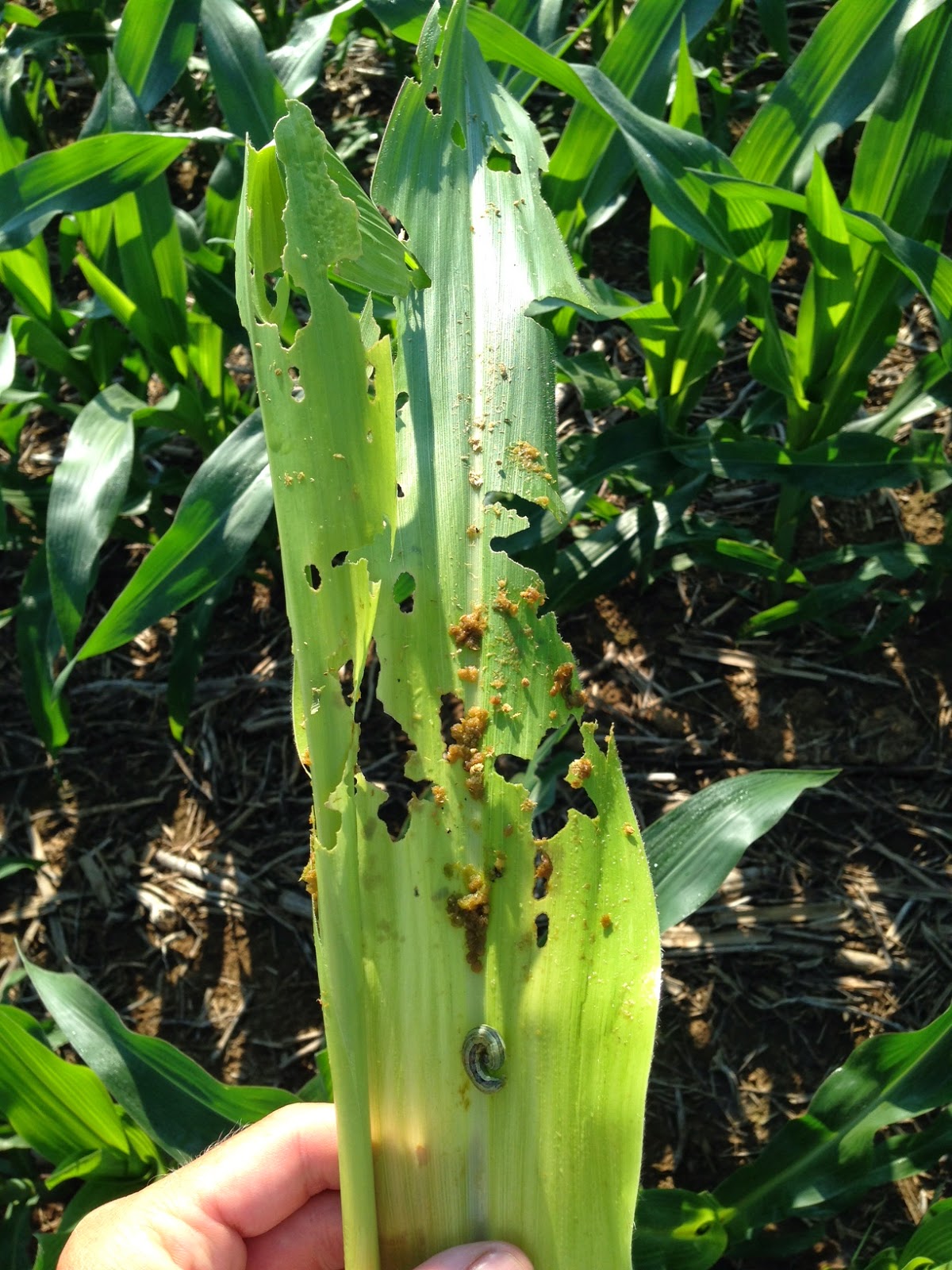Doug Johnson, Extension Entomologist, University of Kentucky
I have reports of scattered, mixed infestations of European corn borer (ECB) and armyworm (AW) in central Kentucky. Thus far, all infestations are in corn that does not carry insect foliar and/or stalk GMO traits (rootworm traits would not apply). This falls pretty much in line with the timing after increase (but not a dramatic increase) in moth flights in mid-to late May. I doubt that this insect pressure is large enough to be of importance to corn products carrying the appropriate insect GMO traits. Nevertheless, for those folks producing non- (insect) GMO corn, scouting is certainly in order. I have not heard any reports from western Kentucky, but west Tennessee has reported sprays for AW control on some wheat fields.
Don’t be surprised if the infestations are very scattered. This is typical of AW in particular and insects in general. You may be able to spot spray if you have good scouting information. AW should be controlled if scouting indicates on average, 2 worms are found on 25-30% of the plants –OR- 1 worm per plant on 75% of the plants. 1st generation ECB should be controlled if 50% of the plants show fresh window pane damage. In both cases live larvae need to remain present.

Fig. 1 Armyworm Damge
If necessary, both of these insects are relatively easily controlled with a foliar insecticide application IF they are still feeding in the whorl. However, once ECB enters the stalk, foliar insecticide will not provide control. Especially for ECB and whorl feeding AW, sprays should be directed into the whorl of the plant. This is where the most significant damage will occur. Notice the AW damage in Figure 1. This damage was done when the leaves were still rolled up. Also notice that the worm is quite large. Control at this stage is not going to do much good. The damage is already done and the worm is about to become a moth and leave. Control needs to happen before this situation occures.
There are many insecticides available that will provide excellent control of both species. See ENT-16, Insecticides for Corn, on the web at:
http://pest.ca.uky.edu/EXT/Recs/ENT16-Field%20corn.pdf
Source : graincrops.uky.edu